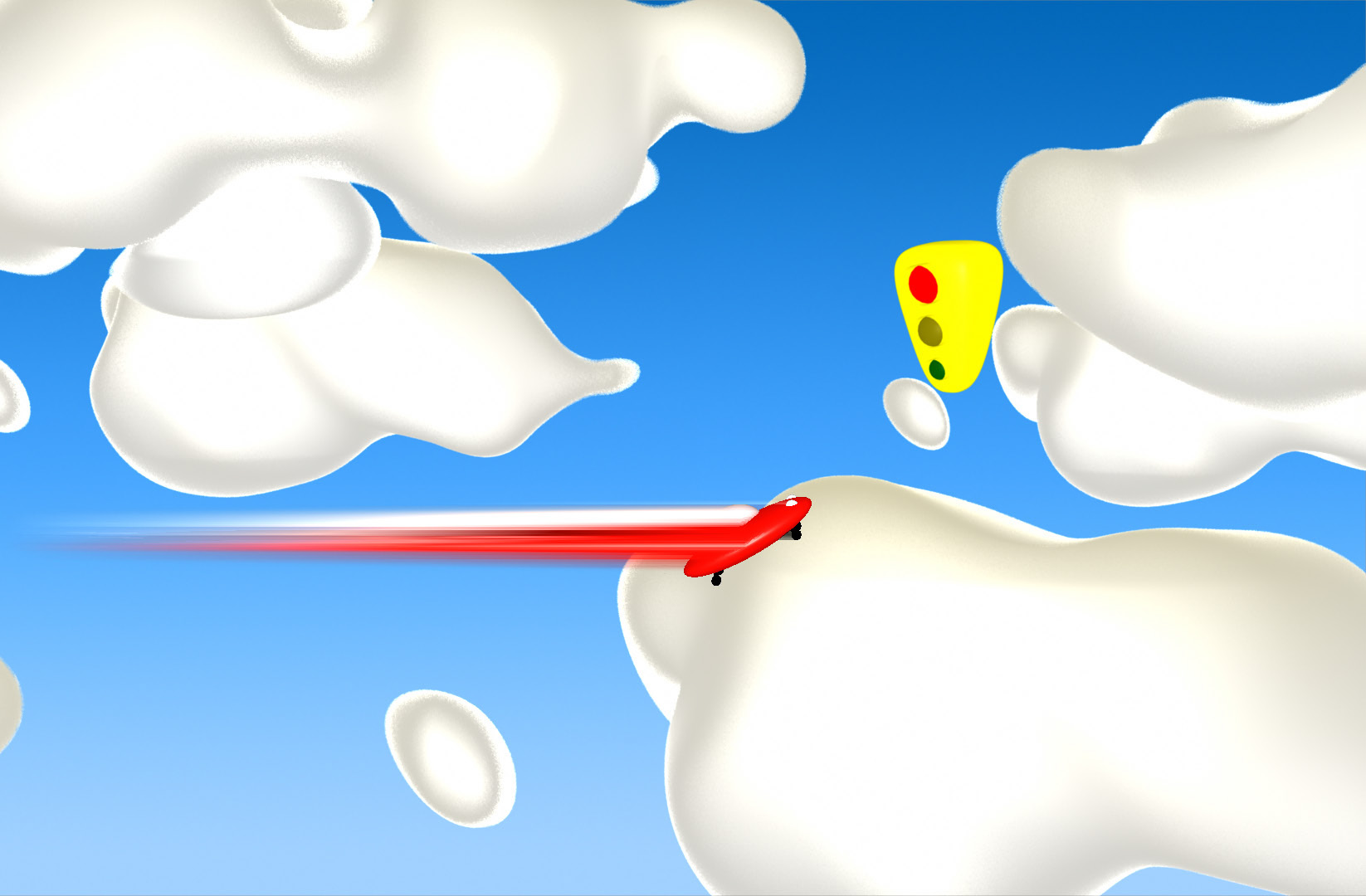“Programmable motion effects” by Schmid, Sumner, Bowles and Gross
Conference:
Type(s):
Title:
- Programmable motion effects
Presenter(s)/Author(s):
Abstract:
Although animation is one of the most compelling aspects of computer graphics, the possibilities for depicting the movement that make dynamic scenes so exciting remain limited for both still images and animations. In our work, we experiment with motion depiction as a first-class entity within the rendering process. We extend the concept of a surface shader, which is evaluated on an infinitesimal portion of an object’s surface at one instant in time, to that of a programmable motion effect, which is evaluated with global knowledge about all portions of an object’s surface that pass in front of a pixel during an arbitrary long sequence of time. With this added information, our programmable motion effects can decide to color pixels long after (or long before) an object has passed in front of them. In order to compute the input required by the motion effects, we propose a 4D data structure that aggregates an object’s movement into a single geometric representation by sampling an object’s position at different time instances and connecting corresponding edges in two adjacent samples with a bilinear patch. We present example motion effects for various styles of speed lines, multiple stroboscopic images, temporal offsetting, and photorealistic and stylized blurring on both simple and production examples.
References:
1. Agarwala, A., Dontcheva, M., Agrawala, M., Drucker, S., Colburn, A., Curless, B., Salesin, D., and Cohen, M. 2004. Interactive digital photomontage. ACM Trans. Graph. 23, 3. Google ScholarDigital Library
2. Assa, J., Caspi, Y., and Cohen-Or, D. 2005. Action synopsis: pose selection and illustration. ACM Trans. Graph. 24, 3. Google ScholarDigital Library
3. Autodesk. 2010. Autodesk Maya 2010. http://www.autodesk.com/maya.Google Scholar
4. Bennett, E. P., and McMillan, L. 2007. Computational time-lapse video. ACM Trans. Graph. 26, 3. Google ScholarDigital Library
5. Bouvier-Zappa, S., Ostromoukhov, V., and Poulin, P. 2007. Motion cues for illustration of skeletal motion capture data. In Non-Photorealistic Animation and Rendering 2007. Google ScholarDigital Library
6. Burr, D. C., and Ross, J. 2002. Direct evidence that “speedlines” influence motion mechanisms. Journal of Neuroscience 22, 19.Google ScholarCross Ref
7. Catmull, E. 1978. A hidden-surface algorithm with anti-aliasing. SIGGRAPH Comput. Graph. 12, 3. Google ScholarDigital Library
8. Chenney, S., Pingel, M., Iverson, R., and Szymanski, M. 2002. Simulating cartoon style animation. In NPAR ’02: Proceedings of the 2nd international symposium on Non-photorealistic animation and rendering. Google ScholarDigital Library
9. Collomosse, J. P., Rowntree, D., and Hall, P. M. 2005. Rendering cartoon-style motion cues in post-production video. Graph. Models 67, 6. Google ScholarDigital Library
10. Cook, R. L., Porter, T., and Carpenter, L. 1984. Distributed ray tracing. SIGGRAPH Comput. Graph. 18, 3. Google ScholarDigital Library
11. Cook, R. L., Carpenter, L., and Catmull, E. 1987. The reyes image rendering architecture. SIGGRAPH Comput. Graph. 21, 4. Google ScholarDigital Library
12. Cutting, J. E. 2002. Representing motion in a static image: constraints and parallels in art, science, and popular culture. Perception 31, 10.Google ScholarCross Ref
13. Fóris, T., Márton, G., and Szirmay-Kalos, L. 1996. Ray shooting in logarithmic time. In WSCG’96 – 4-th International Conference in Central Europe on Computer Graphics and Visualization’96.Google Scholar
14. Goldberg, E. 2008. Character Animation Crash Course! Silman-James Press.Google Scholar
15. Goldman, D. B., Curless, B., Salesin, D., and Seitz, S. M. 2006. Schematic storyboarding for video visualization and editing. ACM Trans. Graph. 25, 3. Google ScholarDigital Library
16. Grant, C. W. 1985. Integrated analytic spatial and temporal antialiasing for polyhedra in 4-space. SIGGRAPH Comput. Graph. 19, 3. Google ScholarDigital Library
17. Haller, M., Hanl, C., and Diephuis, J. 2004. Non-photorealistic rendering techniques for motion in computer games. Comput. Entertain. 2, 4. Google ScholarDigital Library
18. Hanrahan, P., and Lawson, J. 1990. A language for shading and lighting calculations. SIGGRAPH Comput. Graph. 24, 4. Google ScholarDigital Library
19. Hsu, S. C., and Lee, I. H. H. 1994. Drawing and animation using skeletal strokes. Proceedings of SIGGRAPH 94. Google ScholarDigital Library
20. Hulten, P., Ed. 1986. Futurism & Futurisms. Abbeville Press.Google Scholar
21. Kawagishi, Y., Hatsuyama, K., and Kondo, K. 2003. Cartoon blur: Non-photorealistic motion blur. Computer Graphics International Conference.Google Scholar
22. Korein, J., and Badler, N. 1983. Temporal anti-aliasing in computer generated animation. SIGGRAPH Comput. Graph. 17, 3. Google ScholarDigital Library
23. Lake, A., Marshall, C., Harris, M., and Blackstein, M. 2000. Stylized rendering techniques for scalable real-time 3d animation. In NPAR ’00: Proceedings of the 1st international symposium on Non-photorealistic animation and rendering. Google ScholarDigital Library
24. Liu, C., Torralba, A., Freeman, W. T., Durand, F., and Adelson, E. H. 2005. Motion magnification. ACM Trans. Graph. 24, 3. Google ScholarDigital Library
25. Masuch, M., Schlechtweg, S., and Schulz, R. 1999. Speedlines: depicting motion in motionless pictures. In ACM SIGGRAPH 99 Conference abstracts and applications. Google ScholarDigital Library
26. McCloud, S. 1993. Understanding Comics. Kitchen Sink Press.Google Scholar
27. Nienhaus, M., and Döllner, J. 2005. Depicting dynamics using principles of visual art and narrations. IEEE Computer Graphics and Applications 25, 3. Google ScholarDigital Library
28. Noble, P., and Tang, W. 2007. Automatic expressive deformations for implying and stylizing motion. The Visual Computer 23, 7. Google ScholarDigital Library
29. Porter, T., and Duff, T. 1984. Compositing digital images. SIGGRAPH Comput. Graph. 18, 3. Google ScholarDigital Library
30. Potmesil, M., and Chakravarty, I. 1983. Modeling motion blur in computer-generated images. SIGGRAPH Comput. Graph. 17, 3. Google ScholarDigital Library
31. Ramsey, S. D., Potter, K., and Hansen, C. 2004. Ray bilinear patch intersections. Journal of Graphics, GPU, and Game Tools 9, 3.Google ScholarCross Ref
32. Sung, K., Pearce, A., and Wang, C. 2002. Spatial-temporal antialiasing. IEEE Transactions on Visualization and Computer Graphics 8, 2. Google ScholarDigital Library
33. Wang, J., Drucker, S. M., Agrawala, M., and Cohen, M. F. 2006. The cartoon animation filter. ACM Trans. Graph. 25, 3. Google ScholarDigital Library
34. Whitaker, H., and Halas, J. 2002. Timing for Animation. Focal Press.Google Scholar




